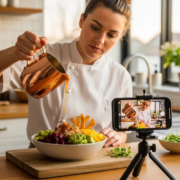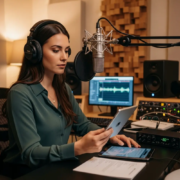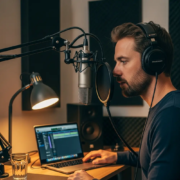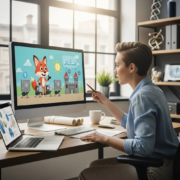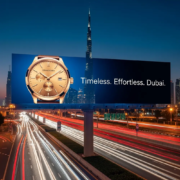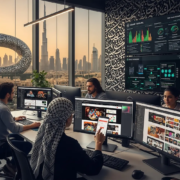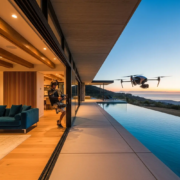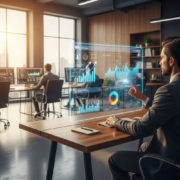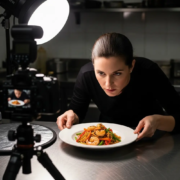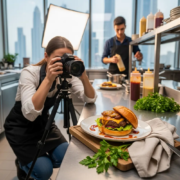Top Food Photography Tips for Cafes and Restaurants
Top Food Photography Tips for Cafes and Restaurants
Picture this: a customer scrolling through Instagram spots your sizzling skillet dish bathed in golden hour light, pauses mid-scroll, and immediately books a table. That’s the power of exceptional food photography. In today’s digital landscape where visuals dominate social feeds and reservation platforms, compelling images aren’t just “nice-to-have” – they’re essential survival tools for culinary businesses. Yet many cafes and restaurants struggle with unappetizing, poorly lit snapshots that undermine their culinary craftsmanship. Mastering the art is easier than you might think, especially with the right guidance. This comprehensive guide delivers actionable top food photography tips designed to transform your dishes into scroll-stopping visual feasts.
Why Exceptional Food Photography Is Your Silent Salesperson
Imagine walking by a cafe window displaying a sad, wilted salad versus one showcasing a vibrant bowl bursting with color – which would draw you in? Visuals trigger appetite centers in our brains more powerfully than text alone. Over 80% of diners now admit menu photos heavily influence their ordering decisions online and in-house. Poorly documented crab cakes might as well not exist on your delivery app, while stunningly photographed tacos can triple their origin location’s daily orders. These top food photography tips address this reality: your images are silent ambassadors selling dishes when you’re not there to describe them. They compensate for the inability to offer samples through screens, conveying texture, freshness, and portion size. A high-converting visual makes people envision their own experience, tapping into emotional decision-making.
Essential Tools Without Splurging Big
You needn’t invest thousands to upgrade visuals drastically. Start smart with achievable gear upgrades. While professional DSLRs work wonders, even modern smartphones boast impressive manual capabilities. Free apps like Lightroom Mobile unlock exposure, white balance, and RAW processing settings. Two indispensable items often overlooked? A portable tripod eliminates blurry shots during dim-hour brunch service, while a 5-in-1 reflector kit ($25 online) solves ninety percent of harsh shadow problems. Alternatively, prop small white foam boards around the plate as bounce cards. The folks at ArtSun Studio excel at advising starter kits matching specific styles and budgets. Remember to occasionally shoot tethered to a tablet if possible – real-time previews prevent disappointing surprises later.
The Smartphone Setup Revolution
Modern phones hold astonishing potential. Prioritize models with portrait and macro modes over megapixel count alone. Disable that disruptive food filter you’ve been using; instead, default to manual controls. Tap to lock focus and exposure on your hero subject – perhaps that glistening berry topping on French toast. Adjust brightness manually instead of relying on auto settings flooding latte art into white oblivion. Clean lenses religiously with microfiber cloths; greasy fingerprints instantly degrade image quality.
Harnessing Natural Light Like a Pro
Nothing sabotages food faster than unflattering fluorescent kitchen lighting casting corpse-like grey tones. Natural indirect daylight? That remains culinary photography’s magic weapon. Position subjects perpendicular to windows, avoiding direct blasts that bleach details. Ideally, shoot during “golden hours” after sunrise or pre-sunset when sunlight diffuses gorgeously through clouds or curtains. Cloudy days actually create nature’s perfect softbox for uniform illumination. If forced to shoot nightside when artificial lights dominate, emulate photographers who craft makeshift solutions: tape tracing paper over intrusive lamps or position candles at strategic angles mimicking natural warmth.
Observe how shifting backgrounds affect perceived light – dark surfaces absorb illumination demanding exposure compensation, while reflective white plates act like built-in bounce cards. Consider directional lighting: backlighting liquifies honey drizzles dramatically, while front lighting explains intricate textures on artisan bread crusts. These subtle top food photography tips separate amateur snaps from professional-grade compositions.
Composing Images That Captivate
Technical sharpness means nothing without compelling composition. Begin by scrapping that sterile bird’s-eye view plaguing takeout menus globally. Instead, lead viewers into your frame with restaurant perspective angles – think diner-eye level capturing steam rising off coffees or low angles elevating towering desserts heroically. Apply the Rule of thirds via imaginary gridlines: place star ingredients along intersections rather than dead-center positions. Try the “fork approach” by leaving negative space suggesting immediate enjoyment awaits.
Storytelling Through Layers & Movement
Static perfection often appears dull. Introduce dynamic elements: hands pouring sauce tableside, stirring spoons midway through swirling latte foam, or scattering herbs mid-descent conveys freshness and action. Establish environments with tasteful backgrounds and middle-ground props like crumbled feta or scattered crumbs hinting at indulgence. Avoid immersive narratives accidentally dominating the dish. A successfully arranged setting should whisper rather than shout – think complementary textures beyond obvious napkins, like rustic wooden boards beneath artisanal cheeses. For mastering these delicate arrangements, explore resources laying out professional theory.
Styling Secrets of Culinary Whisperers
Food styling constitutes half the photograph’s success – yet remains mysteriously underutilized in average kitchens. Start with intentional vulnerability: carve sandwiches openly revealing layers rather than presenting sealed loaves. Every garnish should serve purpose; sprigs of microgreens color-balancing pasta dishes provide earthy connections back to nature. Keep that elusive “imperfect perfection”: Strategically misshapen cookies beat clinically precise manufacturing impressions every time. Maintain authenticity – gluing seeds with Vaseline or using motor oil as syrup substitutes often backfires badly nowadays.
Prepping multitiered compositions? Spritz ingredient groups with water seconds before shooting to resuscitate wilting leaves. Apply oil judiciously using cotton swabs instead of drenching salads unhealthily. Remember that thoughtful plating precedes photography.
Editing: Enhancing Without Deceiving
The line between enhancement and unethical manipulation matters immensely. Basic edits rescue poorly lit textures or messy color temperatures. Avoid fantasy saturation levels turning oranges radioactive though! Instead, selectively boost subdued tones using brushes avoiding global adjustments rendering everything neon-bright.
Prioritize realistic corrective steps: straighten skewed plate horizons, heal stray crumbs distracting from prime subjects, lift shadow areas slightly restoring hidden details, carefully desaturate blues overpowering roasted chicken skin. Free presets often introduce artificial harshness undoing your painstaking natural styling approach. Spend extra effort refining edges manually preserving details against blurred backgrounds. Explore advanced editing services requiring minimal technician time.
Pitfalls Guaranteed to Sink Your Shots
Understanding common blunders prevents repetitive mediocrity. Avoid ubiquitous distractions first: wipe plate rims throroughly clearing oily fingerprints or fingerprint smudges on glasses. Beware reflective plating showing your ceiling lights confusingly alongside green salads. Another pitfall? Overcrowded flatlays losing dish prominence amid chaotic condiments and utensil tangles.
Misapplied artificial lighting creates remedy-defying neon green oddities around mushroom risottos while overheated in-board flashes transform heavenly frostings into plasticized imitations. Commit mortal sins against composition too? Shooting pagoda-plated raw fish stacked dangerously high encourages viewer anxiety over appetizing reactions. Employ these top food photography tips authentically capturing experiences matching real servings.
Maximizing Marketing Impact Across Platforms
Photographing flawlessly means nothing sitting unseen in phones. Tailor formats intentionally per channel: square grids for Instagram aesthetics appealing to mobile scrollers, vertical hero shots dominating Pinterest searches, higher resolution file versions preserving menu PDF integrity. Schedule posts analyzing engagement data: stack images showing meals evoloving (prep shots → final plating → satisfied guest reactions) telling stories. Geotagging strategically places you discoverable location hunters wanting nearby treats instantly.
Surprisingly outfits discover huge photography-driven traffic upgrades could even launch market deliveries based purely upon image accomplishments already accomplished. Internal training ensures consistency internally going forward.
Turning Hires Into Culinary Paparazzi
Cultivating an obsessive photo culture internally signals crucial priority shifts empowering everyone creatively. Hands-on workshops demystifying complex concepts prove invaluable alongside compiled style libraries documenting approved plating, lighting configurations and prop collections. Designate photography kits accessible during slow operational hours encouraging spontaneous documentation capturing specials dynamics ordinary working days miss.
Employee-generated content often radiates truthful enthusiasm algorithms reward emotionally beyond sterile corporate shoots incentivizing participation rewards schemed wisely. Unexpectedly innovative angles emerge naturally adopting mobile-first creative workflows staff intuitively understand. Behind-scenes insights referencing recipes origins also build sincere narrative marketing opportunities too.
Crafting Irresistible Visual Feasts Starts Today
Implement even several top food photography tips covered heralds dramatic improvements not just aesthetically but commercially too attracting spontaneous social sharing. Whether profiting through irresistible Instagram launches destination desserts entrances beyond regulars, elevating visual storytelling matters increasingly daily. Authenticity paired smart technical execution convinces discerning customers repeatedly giving venues repeated chances thriving incredibly.
Perfecting presentation transforms every dish captured into revenue-driving marketing collateral effortlessly extending reach beyond physical premises consistently. So whenever torturing unfilled burgers outdoors basking indirect sunlight teaching chefs composition basics directly, remember successful execution pivots largely passionate commitment achievable methods highlighted right here sparingly.

